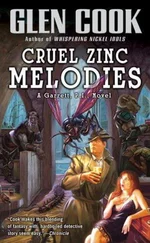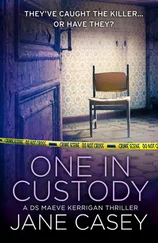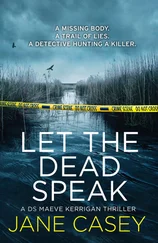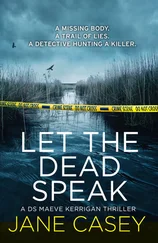‘Mm, but how he killed her is the point. No nicks or marks on the bones, so almost certainly not stabbing – she had no defence wounds on the bones we recovered from her hands and arms either. Her hyoid bone is intact, which strongly suggests she wasn’t strangled. I think she was asphyxiated. It doesn’t take long to starve the brain of oxygen and achieve loss of consciousness so she would have had minimal opportunity to fight back and harm herself. I think he smothered her not long after he kidnapped her.’
The muscle was flickering in Derwent’s jaw. ‘Where’s the fun in that?’
‘That’s not a question I can answer,’ Dr Early said seriously. ‘But I think it’s worth looking at Willa Howard in more detail.’
I had been strenuously avoiding looking at Willa Howard in any detail at all. There was something more unsettling about the images of her, probably because she was more recognisably herself than her sister in death. The flesh had melted away from her body but there was still skin on her bones, and much of her hair had survived, spread out around her in straw-like profusion. She was lying on her front with her head turned to one side, her hands by her sides, palm up.
‘Willa was over here.’ Dr Early pointed to another squiggle on the map, further away from the hide. ‘When you visit the site you’ll see why she was found first – the body was in the lee of a fallen tree. A visitor to the site decided the tree would make a great vantage point for a picture, even though it was off the path. He stumbled over her.’
‘Jesus,’ Derwent muttered.
‘It must have been quite a shock,’ Dr Early agreed. ‘Luckily for him she was quite advanced in decomposition. The worst part – from the point of view of smell and maggots and so forth – is between four and twenty days after death. The gases build up inside the body. Once the abdominal wall is breached the body deflates and starts to dry out and most of the insect activity is from beetles, mites – that kind of thing. She was well into this stage when she was found in the first week of December, which was some five weeks after she disappeared.’
‘So you think she was killed straight away as well.’
‘It seems possible. But unlike Sara, she did have some injuries we can see. This is an X-ray of her skull – see the missing tooth at the front, here? That was broken off around the time of her death. The root is still there.’
‘Sara was missing teeth too,’ I pointed out.
‘Yes, but we recovered them. They became dislodged from the jaw after the gum deteriorated, once there was nothing holding them in place. Willa’s was snapped off and we didn’t find the tooth.’
‘It doesn’t rule out asphyxiation, does it?’
‘Not at all. We don’t know what method he employed but he may have needed to use more force on Willa. She was a little taller and heavier than Sara.’
‘And she was angry. She’d been drinking and arguing with her boyfriend.’ I could imagine her, her body humming with adrenalin and fear, lashing out at Leo Stone because how dare he attack her …
‘There was the blood on the plastic in the cupboard,’ Derwent said. ‘That had to come from somewhere.’
‘Probably this injury, or a nosebleed. Something like that. Unfortunately we did lose a certain amount of detail to decomposition before she was found.’ Dr Early peered at the X-ray as if it would reveal something new to her. ‘There are three things, really, that I wanted to draw to your attention. One: Dr Hanshaw also concluded that the women were asphyxiated and there’s nothing to contradict his assertion. As I said, without being able to see the physical manifestations of asphyxia – the pinpoint haemorrhages and so forth – it’s a case of excluding other modes of death. We are left with asphyxia as the most likely method of murder, as it’s relatively non-violent.’
‘Unless he poisoned them,’ Derwent said.
‘I know you’re joking but we did test for poisons. We tested their bone marrow and their hair, and it’s the hair that’s the second thing I want to talk about.’
‘What about it?’
‘Look at the condition of Willa Howard’s hair compared to how it was in life.’
‘Being dead isn’t great for your looks, as I understand it,’ Derwent said.
‘No, but it doesn’t change the consistency of your hair so quickly,’ Dr Early countered.
Willa’s hair had been long, smooth and thick. Every witness in the bar had commented on it. I frowned at the dry, frizzed-out thatch that covered her scalp. It was orange-tinged and it had snapped off in several places, leaving the ends uneven. ‘It looks as if it was bleached.’
‘That’s exactly what happened. She was soaked in bleach. I’d guess her entire body was immersed in bleach at least once if not more.’
‘To eradicate evidence?’
‘Maybe. Or to try to slow decomposition. The third thing about these bodies is the most interesting, at least to me. The women seem to have died relatively quickly after they were kidnapped, but they weren’t dumped in the nature reserve for a significant period of time after their deaths.’
‘How significant are we talking?’ Derwent asked.
‘Weeks. Maybe more in the case of Sara Grey. And I know that because of the insect activity I mentioned earlier. Dr Hanshaw got a forensic entomologist to sample insect life from the bodies and from the area around the bodies. It’s a reliable way of calculating how long the corpses had been there and what condition they were in when they arrived. What she found was a very small number of the insect first responders – the blowflies, the greenbottles, the flesh flies and so forth. There were plenty of beetles and mites who target fly larvae though – every decaying corpse is also an insect crime scene, I always say – so they had been present at one time, but the larvae hadn’t matured through their three stages to burrow into the ground and become pupae – or if they had, it was somewhere else and they were left behind when the bodies were moved.’
‘What does that mean?’ Derwent asked.
‘It means he kept the bodies until they weren’t usable any more,’ I said.
‘That’s my interpretation.’ Dr Early looked from me to Derwent, eyes bright. ‘The trouble with necrophilia is that it’s so messy .’
I shuddered. ‘Doesn’t bear thinking about.’
‘Toughen up, Kerrigan,’ Derwent snapped. ‘You do need to think about it, because we need to work out where he kept the bodies between the cupboard in his house and when he dumped them here. Not in Dagenham – there wasn’t a trace of post-mortem body fluids from either Willa Howard or Sara Grey, and from what you’re saying, Doc, there would have been a lot.’
‘Absolutely. The body’s own enzymes begin to liquefy the internal organs even without the help of insects. You can slow the process by keeping a body cold, but unless you find some way of mummifying them, you’re going to find they deteriorate.’
‘And there’s no evidence he tried to do that,’ I checked.
‘None at all. Unfortunately there isn’t much evidence of what he did, either. By keeping them until they had completed putrefaction he reduced the chances of anyone literally sniffing them out at the dump sites and he destroyed a lot of the forensic evidence we might have recovered otherwise.’
‘It was all so well planned, wasn’t it?’ I said. ‘We only found Willa Howard by chance, and that led us to Sara Grey. Leo Stone doesn’t strike me as a particularly deep thinker but he managed to kidnap women, keep them for as long as he liked, move them without being spotted and then dispose of them effectively.’
‘He’s spent years in prison. He probably spent the whole time planning what he was going to do when he got out.’ Derwent’s mouth twitched. ‘He had all the luck until he got arrested. You’ve got to think it’s our turn to be lucky now.’
Читать дальше












